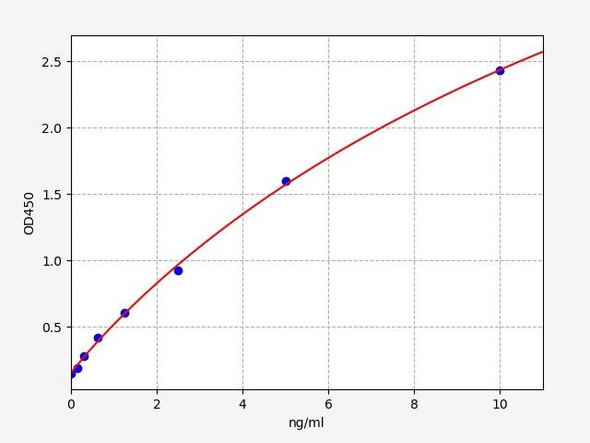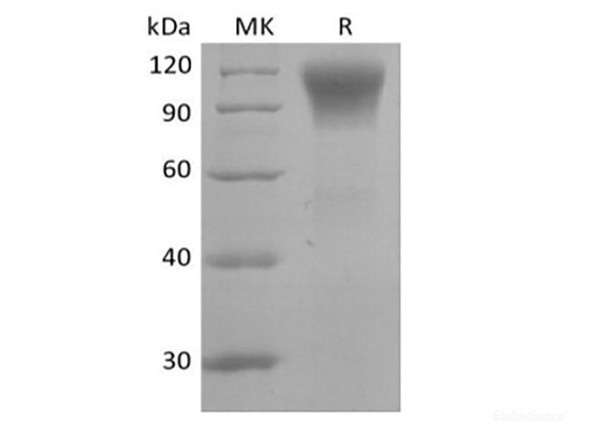Description
| Product Name: | Recombinant Human TRAIL R1 / DR4 / TNFRSF10A (C-6His) |
| Product Code: | RPES6359 |
| Size: | 10µg |
| Species: | Human |
| Expression Host: | HEK293 Cells |
| Synonyms: | APO2, CD261 antigen, CD261, cytotoxic TRAIL receptor, DR4, TNF-related apoptosis-inducing ligand receptor 1, TNFRSF10A, TRAIL-R1, TRAILR1 |
| Mol Mass: | 23.7 kDa |
| AP Mol Mass: | 19-30 kDa |
| Tag: | C-6His |
| Purity: | > 95 % as determined by reducing SDS-PAGE. |
| Endotoxin Level: | < 1.0 EU per μg of the protein as determined by the LAL method. |
| Bio Activity: | Testing in progress |
| Sequence: | Ala24-Asn239 |
| Accession: | O00220 |
| Storage: | Generally, lyophilized proteins are stable for up to 12 months when stored at -20 to -80°C. Reconstituted protein solution can be stored at 4-8°C for 2-7 days. Aliquots of reconstituted samples are stable at < -20°C for 3 months. |
| Shipping: | This product is provided as lyophilized powder which is shipped with ice packs. |
| Formulation: | Lyophilized from a 0.2 μm filtered solution of PBS, pH 7.4. Normally 5 % - 8 % trehalose, mannitol and 0.01% Tween80 are added as protectants before lyophilization. Please refer to the specific buffer information in the printed manual. |
| Reconstitution: | Please refer to the printed manual for detailed information. |
| Background: | Tumor necrosis factor receptor superfamily member 10A (TNFRSF10A) is also known as TNF-related apoptosis-inducing ligand receptor 1 (TRAIL-R1), Death receptor 4 (DR4), CD261 and APO2, which belongs to TNF superfamily. TNFRSF10A / DR4 is widely expressed and high levels are found in spleen, peripheral blood leukocytes, small intestine and thymus, but also in K-562 erythroleukemia cells, MCF-7 breast carcinoma cells and activated T-cells. APO2 / TNFRSF10A is receptor for the cytotoxic ligand TNFSF10 / TRAIL. This receptor is activated by tumor necrosis factor-related apoptosis inducing ligand (TNFSF1/TRAIL), and thus transduces cell death signal and induces cell apoptosis. TRAIL R1 can promote the activation of NF-kappa-B. TRAIL R1/CD261/TNFRSF1A induces apoptosis of many transformed cell lines but not of normal tissues, even though its death domain-containing receptor, DR4, is expressed on both cell types. |






